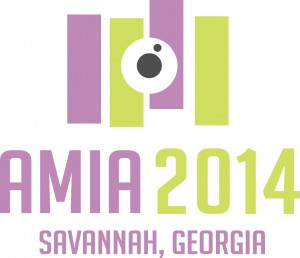Tips for Speakers & Presentations
 SPEAKING
SPEAKING
Have a beginning, a middle and an end to your talk. Preferably make the end the same as the beginning. In other words start off by saying something, expand on it, exemplify it, give examples of what you did, quote what other people said about it, what they thought, what you thought about what they thought, how this changed your /their behavior, then – when all seems lost go back to the beginning and remind everyone about what you are talking about.
Be prepared. Know your material, know your powerpoint/presentation and know how much time your presentation will take.
Speak for slightly less time than you have been allocated (everyone likes longer breaks and being first in the queue for coffee)
Never go over the time you have been allocated (everyone hates curtailed breaks and being last in the queue for coffee)
Your notes can be visible, but don’t read aloud. Reading aloud separates you from the audience, creates an impersonal distance (and they’ll never believe you when you read out: ‘Oh! That reminds me of a funny little anecdote…’)
Slow down. Almost everyone speeds up when they’re nervous. But to be understood, you need to slow down just a little. You worked so hard on every word in your presentation, so take your time and let them sink in for the listener.
Remember that your audience is on your side – they are willing you to do well; they are your friends; they have nice smiles on their faces and they are waiting to applaud you like mad at the end of your talk. Smile back: this is your party and these are your guests – enjoy yourself.
BUILDING YOUR POWERPOINT/PRESENTATION
Don’t let your message and your ability to tell a story get derailed by slides that are unnecessarily complicated, or busy. Remember that your slides are only there to support, not to replace your talk! You’ll want to tell a story, describe your data or explain circumstances, and only provide keywords through your presentation.
Minimize the number of slides. Keep the number of slides to a minimum – it offers a clear message and will keep your audience interested.
Use a font size and style that is easy to read from a distance. A quick rule of thumb to check the size, put your presentation at full screen and a two inch letter is readable at 20 feet – a three inch letter is readable from 30 feet.
Keep your text simple. Use bullets or key phrases and try to keep each to a single line. You want your audience to listen to your presentation, not struggle to read a screen. Use key words, not sentences.
Use art or pictures to help convey your message. A picture is worth a 1,000 words – but don’t overwhelm the audience with too many images per slide.
Label charts and graphs clearly. Use just enough text so the chart or graph can be read clearly – too much in the label becomes unreadable.
Check your spelling and grammar. The easiest and most overlooked tip of all.
BEFORE THE SESSION
Be in contact with your Chair. Keep in contact with your Chair. Your chair will be working with the Conference Committee to ensure a smooth session, so be sure to ask them if they have any questions about your presentation. Make sure you know the date and time of their presentation. Give your Chair a short bio that s/he can introduce you properly.
Meet Your Fellow Speakers. Arrange to meet your with other session speakers early in the conference.
Have Session Plan. Be familiar with the session format, what AV is in the room, and the plan for your session.
Confirm who is bringing the laptop. If you are not bringing your own laptop, make sure the Chair or another speaker will be bringing one. Ideally, all of the powerpoints are loaded on a single computer. If the laptop is a Mac, bring a connection cable – some are proprietary and it isn’t guaranteed that the AV technician will have a spare.
THE DAY OF THE SESSION
Bring a backup. Send your presentation to the Chair prior to the session, but always, always bring a backup with you.
Get there early. Arrive in the room at least 15 minutes before your scheduled start. There will be an AV tech in the room and an AMIA staff person waiting for you.
